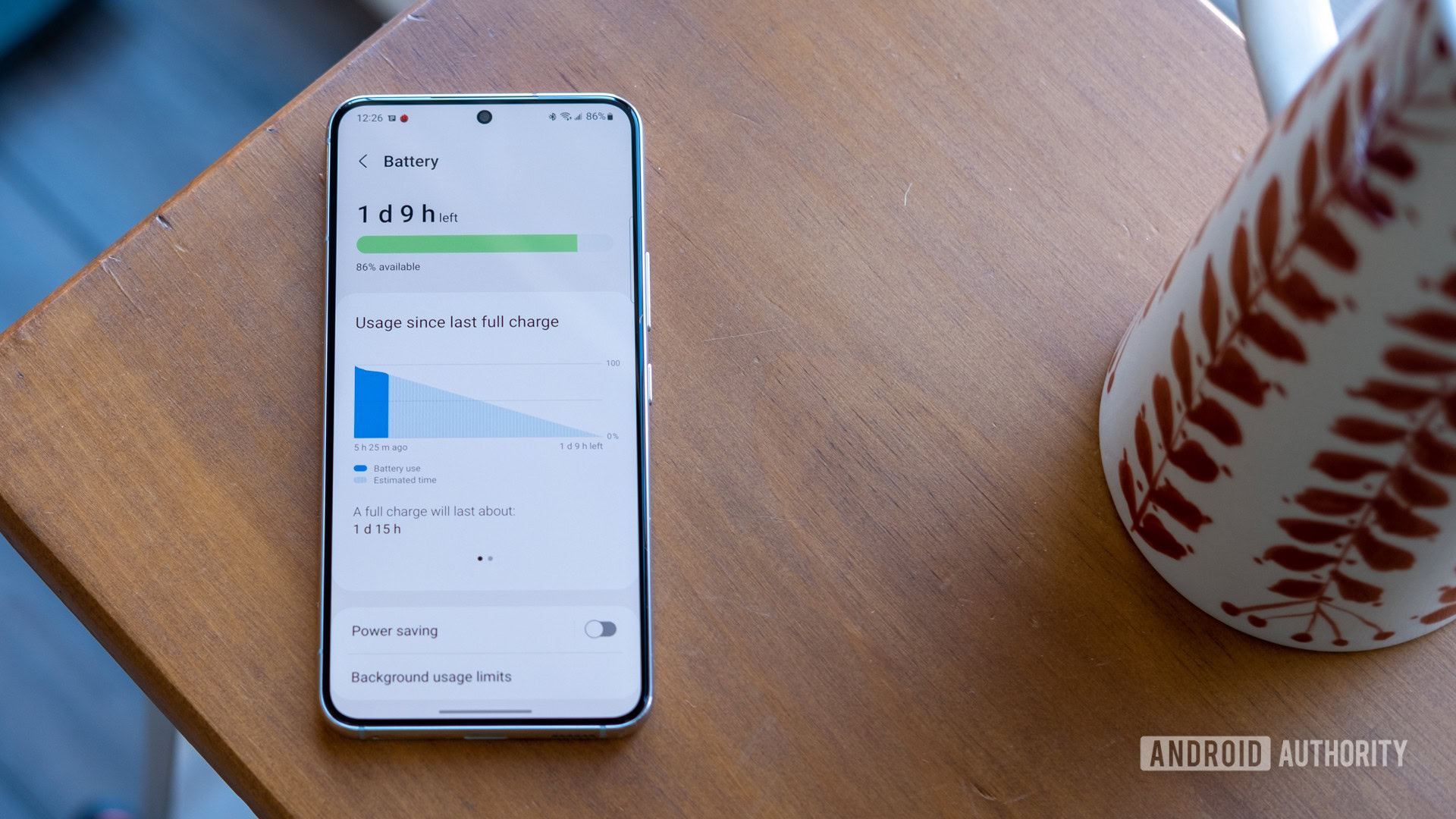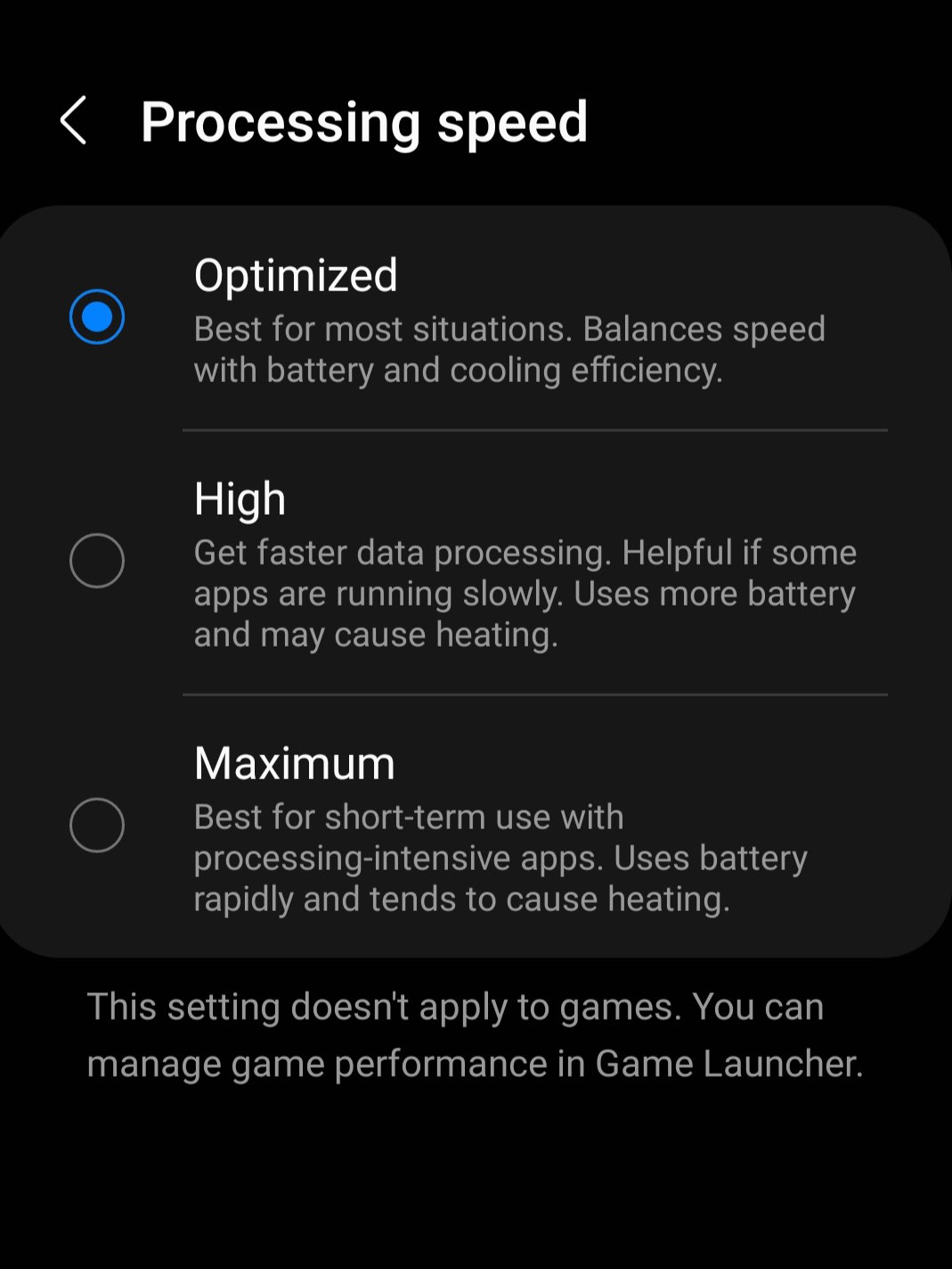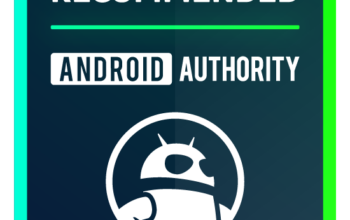As phones have become more capable of performing various tasks, the need to better allocate battery power has become crucial to maximizing its lifespan. Today, our phone’s SoC significantly regulates power consumption between the apps and features we use during the day. Let’s look at how Android’s Adaptive battery works and how you can ensure it’s turned on for your device.
THE SHORT ANSWER
Adaptive battery is an Android feature that extends the battery life based on your phone usage.
KEY SECTIONS
What is Android Adaptive Battery, and how does it work?

Ryan Haines / Android Authority
When you are using your phone, it isn’t just the app you have open that is eating up your battery life. Even when you put your phone down and aren’t touching it, many background processes are running behind the scenes. For example, many apps actively retrieve information, such as contacts or location data, from other apps, not to mention all the external cellular and Wi-Fi connections taking place.
All of these processes and more need varying amounts of energy to function. Without anything to coordinate power consumption, you would notice a big difference between an optimized battery and a device without one. An Adaptive battery is how your Android phone makes it through an entire day of usage or more. Here are a few key system tools that adaptive battery uses.
Limiting background apps
The most common way Adaptive battery saves minutes to hours of battery life is by restricting how apps run in the background. As mentioned earlier, some apps can consume a lot of power without you knowing it. When Adaptive battery is turned on and an app is running too heavily, you will get a notification with the option to put it to sleep.
Over time, Adaptive battery will learn which apps take up the most background usage and limit some of their functions. This doesn’t really affect your phone performance, but it means the battery won’t drain drastically when your phone is idle.
Learning your habits
Another way Adaptive battery lives up to its name is by learning the patterns of how you use your phone. After having Adaptive battery enabled for some time, your phone will keep track of what apps you use the most, how long you use them, and how quickly your battery drains when not optimized.
Eventually, your Android phone will utilize this data to fine-tune how it expends a full battery so that it can last throughout your daily usage. A crucial piece of information in this equation is learning your charging habits. Once the time is regular enough, Android will start stretching your battery life to when it anticipates you will plug in your phone to charge.
Reducing performance
One of the subtler ways Adaptive battery improves battery life is by slightly reducing performance. Chips take a lot of power, and your battery can last much longer if that power is reduced to match your current needs.
On Samsung Galaxy phones, there’s a complimentary feature to Adaptive battery in the settings that lets you change your device’s processing speed. This tool can save you more battery life than Android’s Adaptive battery does. The Exynos processor in the flagship S-series devices barely lags at all in the “optimized” state, either. However, the difference in performance can be more noticeable in other Android devices, but if you are out and about without a charger, that might not be a concern.
How to turn on Android Adaptive Battery
Here’s how to turn on Adaptive battery on a Google Pixel or Samsung Galaxy phone.
Google Pixel
Navigate to the settings by swiping down from the top screen and tapping the Settings cog. Then tap Battery. Select Adaptive preferences, and lastly, hit the toggle on Adaptive Battery.
Samsung Galaxy
Navigate to the settings by swiping down on the screen and tapping the Settings cog. Select Battery and device care. You can optimize your battery usage here. Tap the Battery readout near the top, then scroll down to select More battery settings. There, you’ll find the Adaptive battery toggle.
As mentioned earlier, you can also adjust the Processing speed just underneath the Adaptive battery option. There are three different speeds: Optimized, High and Maximum. Select the option that best suits your usage.

Adam Birney / Android Authority
How to manage battery usage for individual apps
Adaptive battery will treat all apps the same, but you can manually give certain apps exceptions or stricter limitations. Navigate to your Settings and select Apps. From there, select the app you want to manage, scroll down to select Battery, and select the desired battery usage for that app.
Overall, Adaptive Battery is a great feature to extend the life of your Android device. If you find your battery isn’t lasting long enough, try turning it on or limiting the usage of energy-hungry apps. Remember that Adaptive battery needs time to learn your usage habits and may not work right away, but you should notice results soon enough.
Up next: Android Adaptive Brightness: Everything you need to know
FAQs
If you find your battery life isn’t lasting long enough, then you should consider turning on Adaptive battery to meet your usage habits better.
Fast charging won’t damage your battery. However, if you leave your phone plugged in for long amounts of time, you might consider turning on Protect battery in More battery settings. This will limit the maximum charge to 85% to help extend the lifespan of your battery.
Adaptive charging can help extend the lifespan of your battery and keep your device from running hot while charging. Learn more in our guide.
Quite the opposite. Adaptive battery reduces the amount that apps and background processes drain your battery, extending your device’s battery life.



